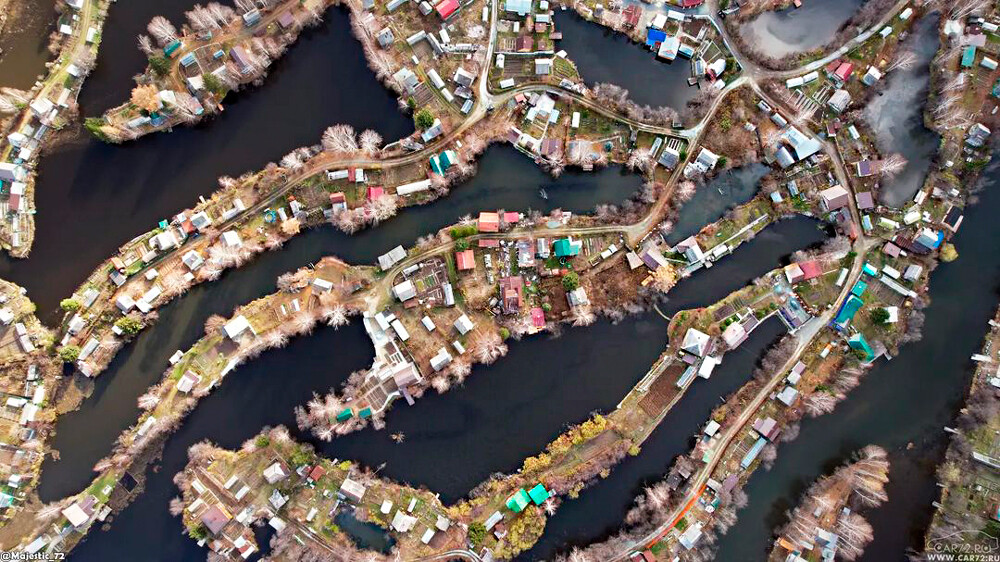Take a look at Monzino aka ‘Ural Venice’ - the most picturesque village of the region (PHOTOS)


In the suburbs of the Ural city of Nizhny Tagil, there is a dacha village called Monzino, proudly referred to by locals as ‘Ural Venice’. From a bird’s eye view, its roads seem to be built right in the waters of the Tagil River. This street “configuration” is manmade, as it emerged as a result of active gold mining.

The 1820s saw a real “gold rush” in the Urals. In 1823, Tsar Nicholas I signed an order enabling individuals to mine gold and platinum, with a number of mines quickly set up on the outskirts of Nizhny Tagil.

The location of gold fields in the area had been known ever since the second half of the 18th century, but it was kept secret. Over the next 100 years, between 1825 - 1925, as many as 25 tons of gold were mined in over 120 gold fields of the Tagil Region.

On the territory of Monzino, much of the work was done by dredgers - vessels meant for bottom deepening, as well as drags - mining machines on floating platforms that functioned as bucket chain excavators. The operations resulted in the emergence of multiple creeks, ponds and river branches.

The mining in the suburbs of Nizhny Tagil spanned from the late 19th century up until the 1980s, with the lands subsequently handed over to gardening communities.

To make the soil suitable for planting, pebble stones and quite a bit of a fertile layer had to be added on a number of land plots. The gardeners did almost all of this by hand. Luckily, they didn’t have issues with watering.

The village is located on the floodplain, with fresh water flowing freely through the ponds. Incidentally, according to the locals, there are almost no mosquitoes in the area.

Monzino’s canals and creeks reach up to three meters in depth, while the water can rise up to two meters high during seasonal floods. Almost every household has a boat, so that docks occupy most of the bank line of the gardening communities.

In winter, the vibrant life in Monzino comes to a standstill, with its residents typically relocating to cities. Yet, in summer, the population of all the local gardening communities, which amount to above ten, reaches as many as several thousand people.


